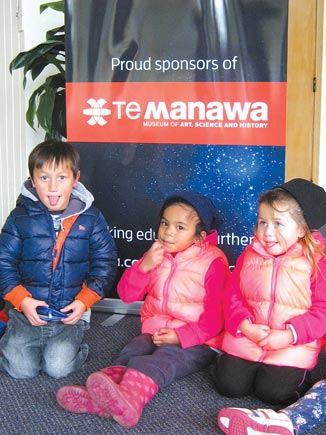
Matariki (literal meaning: the ‘eyes of god’ or ‘little eyes’) is the Maori name for the cluster of stars known as Pleiades. The ascent of Matariki in late May or June signals the change of season and heralds the start of the Maori New Year. For iwi in the west coast the ascent of Puanga (Rigel in Orion) indicates the start of the Maori New Year as the pae maunga (mountain ranges) obstruct the view of Matariki. Although the time to celebrate Matariki differs amongst iwi, Maori New Year is marked by the ascent of Matariki and the sighting of the next new moon.
Matariki was traditionally a time to remember those who had died in the last year, but also to harvest crops, and collect seafood and birds. With plenty of food in storehouses Matariki became a time of celebration — singing, dancing and feasting, and preparing ground for the coming year.
Today, Matariki is a time of bringing people together in organised community activities during the June/Pipiri and July/Hongongoi period, as well as a period of revitalising traditional practices, including the regeneration of Maori language. Educational programmes in the Wellington and Kapiti region, organised by Te Whakaminenga o Kapiti in partnership with Kapiti Coast District Libraries include poi piu workshops, Taha Moana environmental research and awareness, introduction to star gazing, Maori astronomy and demonstrations of weaving and carving.
A recent session held in Otaki’s Memorial Hall reflected the emphasis on tamariki — kura and kohanga reo were invited to discover the night sky in an inflatable planetarium. Star Lab educators, Barbara Arnold, Manu Kawana and Anne Gordon explained the complexities of the Matariki constellation to the young audience, guiding them through concepts such as navigation, myths and legends, space, time and seasons, all with a focus on Matariki.
‘It was essentially a Maori world view on the constellation for our immersion kura and kohanga, and educators spoke in both languages,’ said Maia Whiterod, Librarian — Heritage and Maori Collections. ‘The session was very well received by all ages.’
Further sessions include ‘Matariki at Mahara’ which runs until 27th July at Mahara Gallery, Waikanae, and features exhibits from top weavers and carvers from the Kapiti region, accompanied by a programme of workshops and waiata.
For information on Matariki events go to www.kapiticoastlibraries.govt.nz and www.matarikiwellington.org or contact Maia Whiterod on telephone 06 364 9309, email maia.whiterod@kapiticoast.govt.nz

